
Lead magnets are an effective technique for gaining a prospect's contact information. The problem is that these magnets can take a lot of time and energy to produce. Podcasts, e-learning courses, video series, and contests all sound great but seriously, who has time for that?
In this article, I want to show you nine different lead magnets that you can create today by recycling content that you already have.Every blog post in your archive has the potential to generate new leads for your business so let’s make sure that your blog is a lead generating machine.
1) The Mini Ebook
The mini ebook is perfect when you have a series of blog posts about a related subject. For example, if you were running an online pet store then you might pick out the following five posts from your blog to combine into an ebook:
- The 5 pieces of equipment that every puppy needs
- The ultimate guide to housetraining a puppy
- The first 6 months: what you can expect from your new puppy
- The puppy nutrition guide: what your dog should and shouldn’t eat
- The 7 things you should never do when training a puppy
These posts could be logically compiled into an ebook entitled “The Puppy Planner: Everything you need to know to prepare for your first puppy”.
This type of ebook is effective because you are making life easy for visitors to your website. Rather than asking them to find all this content one article at a time, you’re packing it up into a convenient bundle that they can keep and refer back to. The most successful lead magnets offer an irresistible and instant reward to your visitors and the mini ebook certainly ticks that box.
2) The Ultimate Guide
If you’re in an industry that is already well established then it can be hard to come up with original content. Sometimes other people have covered a subject in such detail that it’s almost impossible to add extra value. In this situation I would recommend producing an Ultimate Guide.
An Ultimate Guide is a comprehensive collection of the best articles about a particular subject. The main difference between this and a mini ebook is that you are not recycling posts from your own blog but rather linking directly to other sites. It’s important that you don’t copy and paste someone else’s content into your guide but rather just include a link back to the original article.
In this example Brian Dean from Backlinko.com produced Link Building: The Definitive Guide
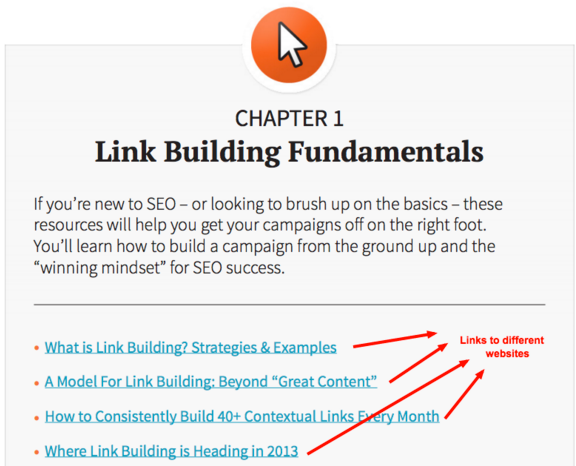
Link building is a complicated and broad subject so Dean’s definitive guide saves his audience a lot of time looking for this content. And since so many other experts have written fantastic content about link building Dean also saved himself the time of competing with content that already exists.
Rather than just listing the links, Dean adds extra value to his audience by categorizing them and including a brief introduction for each category. This guide has also been well designed, reiterating that this a valuable resource that should be kept and referred back to.
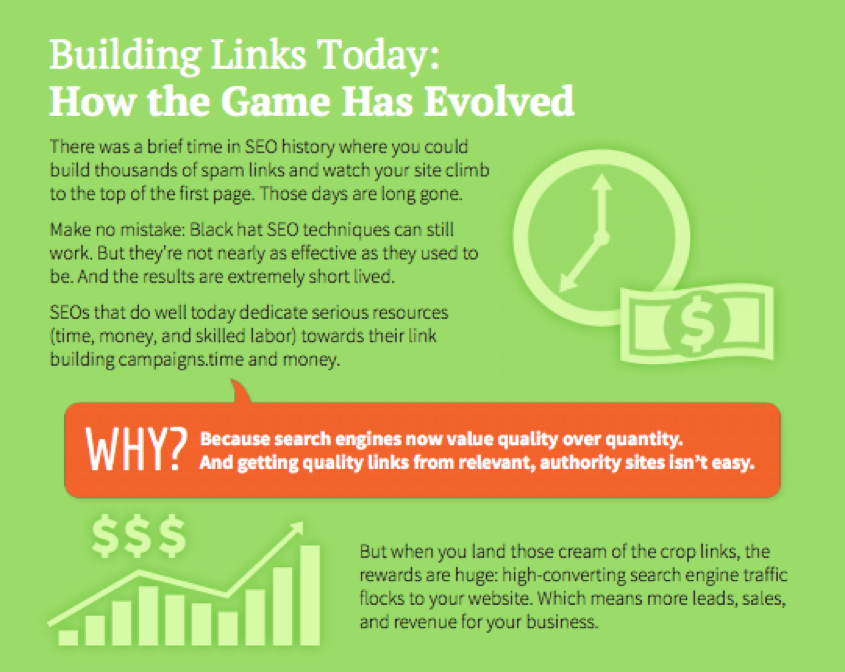
Do you work in an industry that is already bursting with quality content? Why not think about making your own Ultimate Guide.
3) The Bonus Pack
Offering additional content that is not included in the original blog post is the perfect way to reward readers who opt-in. If you have an article titled “The 5 Pieces of Equipment That Every Puppy Needs” then you could offer readers an exclusive PDF with a few more pieces of equipment that may have come on the market since the original post was published.
In his article "How to go from one Facebook ad to $197 in less than 60 seconds" blogger Bryan Harris took this one step further and combined a PDF version of the article along with 5 links that weren’t in the original post - people only got these bonuses when they subscribed.

This lead magnet was so successful that 42% of the people who saw it opted-in to receive the Bonus Pack. Imagine the leads you would have if almost half the people who visited your website gave you their email address!
4) The Resource Guide
If you have written a strategic blog post then you might want to consider offering a Resource Guide as a lead magnet. A Resource Guide is a collection of things that help people achieve results.
Dean used this strategy in his post "Seo Tools: The Complete List." He offered a free download that detailed the 153 tools featured in his post - the perfect resource for a reader to keep and refer to whenever they need.
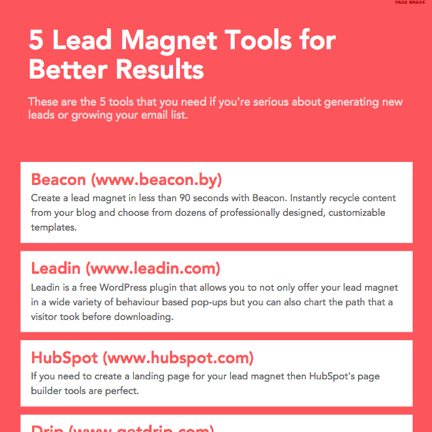
The Resource Guide could be as simple as list of five books or apps that you recommend. Since it is easier to buy a tool to get results than it is to actually implement a strategy, your readers will love this.
What resources could you recommend to a potential customer that would help them to achieve better results?
5) The Checklist
Instructional blog posts are just waiting to be turned into Checklists - and they couldn’t be easier to create. Just take your blog post and simplify it into a series of bullet points. Next, remove any points that don’t contain actionable advice. Split the list into several numbered steps to make the outcome more achievable.
Bonus points if you offer the Checklist in a printable format so people can physically tick-off as they go. That sense of achievement is a great feeling that people will attribute back to you.
This Ultimate Webinar Checklist from HubSpot is an incredibly valuable lead magnet because of how practical it is. Hosting a webinar involves balancing a lot of different tasks coming together at the same time. This checklist informs you about everything you need to watch out for from pre to post webinar.
6) The Workbook
The Workbook is an incredibly effective lead magnet, especially for service businesses. In its simplest form a Workbook is a download-and-complete resource that helps people to apply the principles of your blog post to their business.
Neil Patel offers this highly practical Workbook for writing blog posts that rank in Google. It includes exercises like planning your blog post structure and experimenting with different introductions.
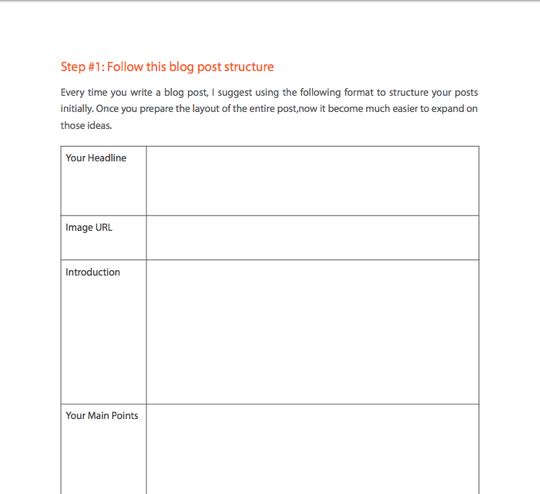
Patel’s example is brilliantly simple in its execution. He keeps the design to a minimum so people won’t worry about their ink running out when printing and he has left plenty of room for people to write their answers.
The goal of a Workbook is to have the participant learn by doing. As the teacher in this scenario you are positioning your business as an expert on the matter at hand. With that in mind you want to choose the exercises that you set in your Workbook carefully. Ideally you want to gradually tease information out of the participant so that at the end of the Workbook they can combine their short answers into a comprehensive piece of work - in Patel's case the participant would have had a complete blog post written by the time they finished.
A Workbook is the perfect stepping stone to your premium products or services so be sure to include a strong call to action at the end which clearly tells the participant how you can help them to apply their new found knowledge.
Is there a particular subject that you could help you audience understand more clearly with a Workbook?
7) The Secret
One of the best lead magnets that I have ever seen was produced by Tim Soulo. It was so effective that I immediately opted-in without thinking. Suolo had written a blog post about sending an outreach email to well known blogger Rand Fishkin. His call-to-action was:

This call-to-action was pitch perfect because it got me curious. I just had to know what the email subject was. I also knew that it would be a relatively short read so I wouldn’t have to commit to a lengthy ebook - lazy I know but that’s human nature sometimes!
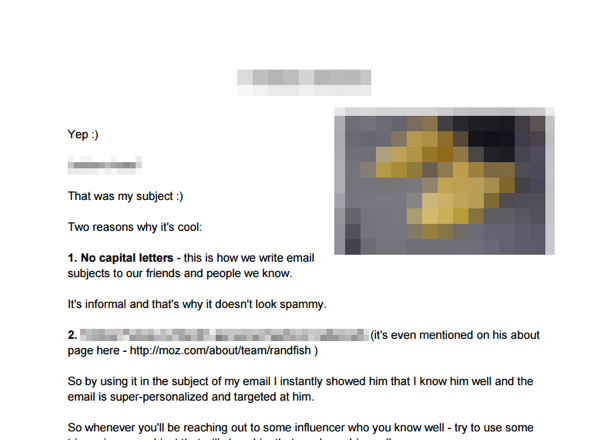
Suolo's lead magnet is just 1 page and was just made with a standard Word Processor. There was no point in spending time or money on the design in this case because the secret is the only thing that matters.
I blurred out the tell-tale image and text in the above screenshot - if you want to know Suolo’s secret then you’ll just have to download the lead magnet!
Do you have any behind the scenes insights to a blog post that are compelling enough to offer as a downloadable secret?
8) The Cheat Sheet
If your blog post covers a complicated topic then it might be a good idea to offer readers a one-page sheet that they can refer back to when they need to refresh their memory. This could be a glossary of terms or just a brief summary of some key points.
This type of download-and-keep resource takes the pressure off readers so they don’t have to memorize or implement your strategy immediately. It does compel readers to opt-in to your list though which is the ultimate aim.
In this example, Jay Acunzo offers a Visual Cheat-Sheet for Editing to Help You Move Faster. The goal here is to help his readers to edit their work while still moving quickly through the process. A Cheat Sheet is the perfect resource here because the compact format means that people can quickly glance at it while they are going through the edit process. It really is a complementary tool for an existing process.
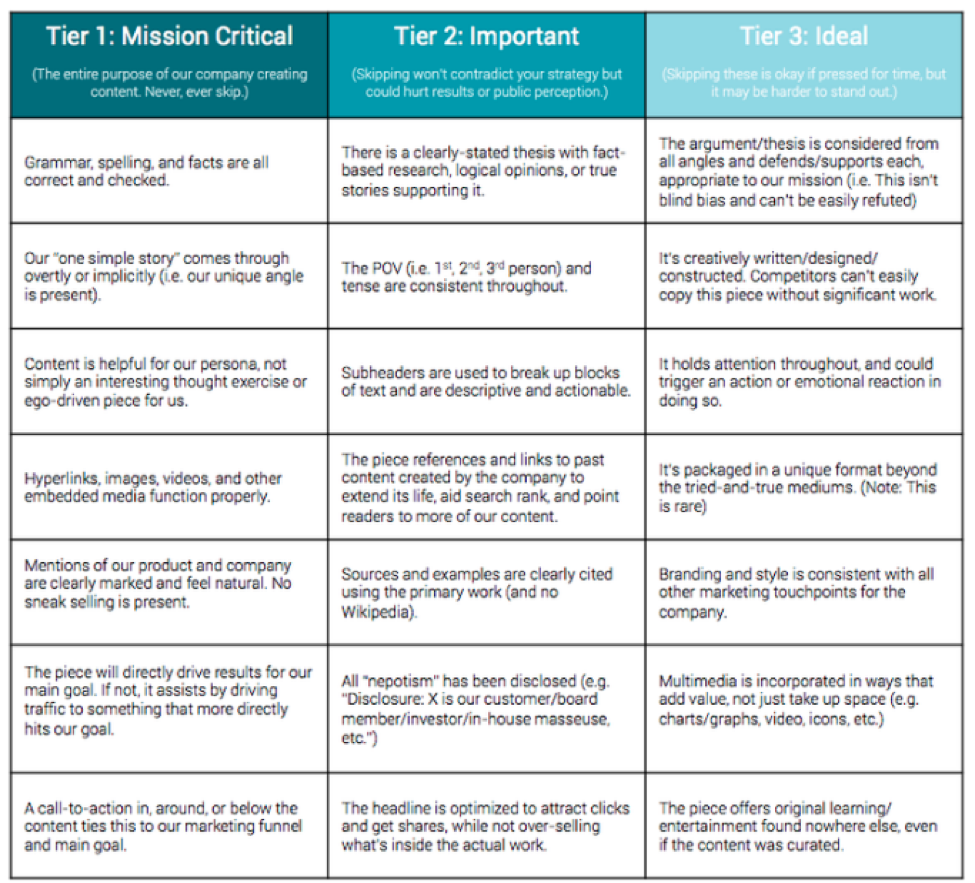
9) The Guestbook
If you have used guest blogging as a backlink strategy then you probably agreed to not republish that particular post on your own blog. This is fairly common as Google punishes sites that duplicate content so it’s in nobody’s best interests.
What you can do though is compile all these guest posts into a book format. Since the content will be gated behind a lead capture form there is no risk of Google flagging it as duplicate content and you get to squeeze a little bit of extra value from that content you worked so hard on.
Conclusion
There you have it, nine ways to recycle your existing content into lead generating assets. Since you already have the content, each of these lead magnets should take no longer than 20 minutes to produce. Just think of the all the extra leads you could generate if you added a lead magnet to each blog post in your archive.
from HubSpot Marketing Blog http://blog.hubspot.com/marketing/creating-lead-generation-offers-from-blogs
Via http://blog.hubspot.com/marketing/creating-lead-generation-offers-from-blogs
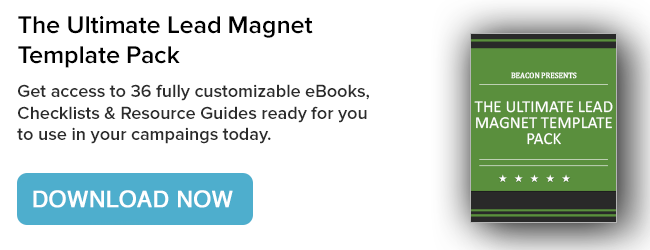
No comments:
Post a Comment